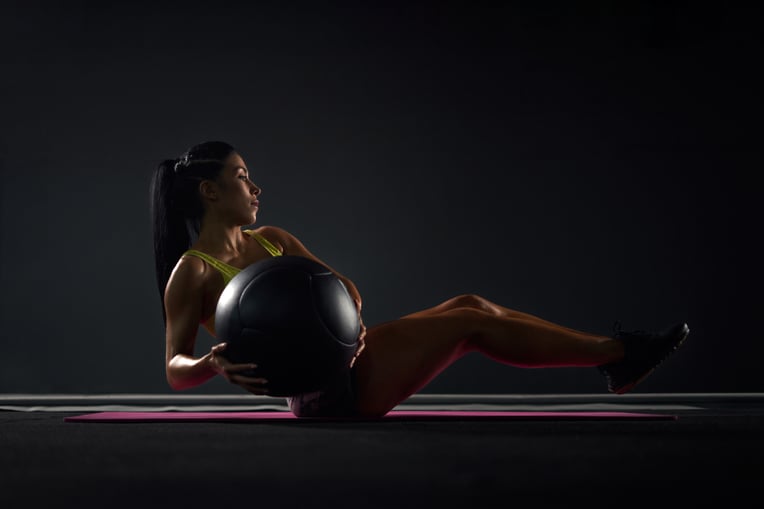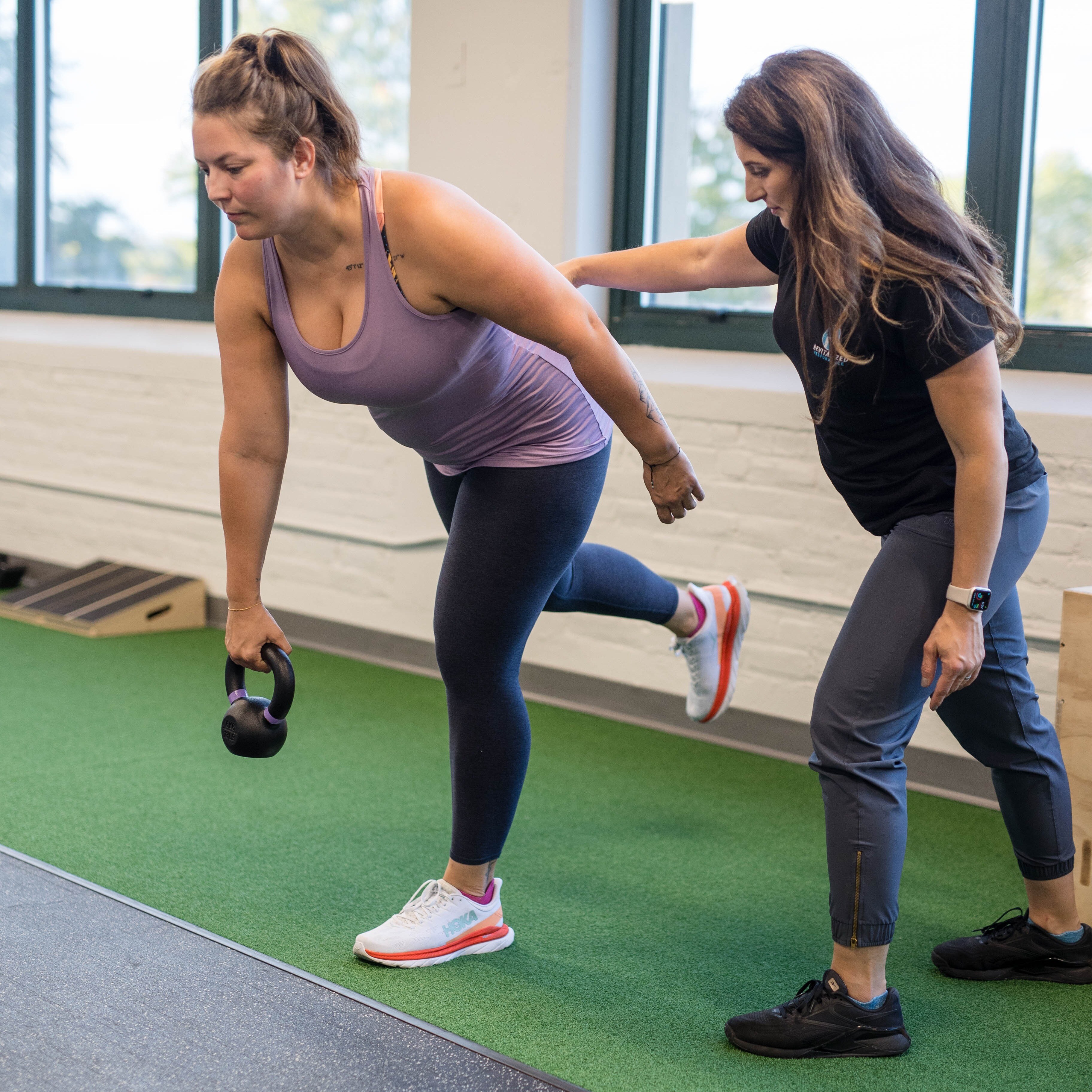When people think of athletic performance, they often picture explosive power, speed, or agility. But underneath all of that lies something foundational—core strength. A strong core is the anchor for nearly every movement an athlete makes. Whether it’s sprinting down the field, changing direction on the court, or absorbing contact in a tackle, the core provides the stability and control that keeps everything else working smoothly.
At Revitalized Performance in Manchester, NH, we work with athletes across all levels who want to perform better and stay injury-free. And time after time, we’ve seen how addressing core deficits can be a game-changer—not just for performance, but for long-term health and resilience.
Understanding the relationship between core strength and injury prevention helps athletes train smarter, recover faster, and move with more confidence. It’s not just about having visible abs—it’s about building a durable, efficient system that supports the entire body under stress.
READ: What Is Performance Physical Therapy? A Comprehensive Breakdown

The Core Defined: More Than Just the Six-Pack
When most people hear "core," they immediately think of the rectus abdominis—the visible “six-pack” muscles. But in reality, the core is a much more complex and integrated system. It includes deep stabilizers, spinal support muscles, and components of the respiratory and pelvic systems that all work together to provide strength and control.
Key Components of the Core:
- Transverse Abdominis (TVA): Acts like a natural weight belt, stabilizing the spine before movement occurs.
- Multifidus: Deep spinal muscles that support vertebral alignment and segmental stability.
- Obliques (Internal and External): Responsible for rotation and lateral flexion, but also critical for bracing and anti-rotation.
- Diaphragm: Often overlooked, this muscle coordinates with the pelvic floor and abdominal wall to manage intra-abdominal pressure.
- Pelvic Floor: Works in tandem with the diaphragm and core muscles to stabilize the trunk from the bottom up.
Together, these muscles form a cylindrical support system around the spine and pelvis. When properly trained and functioning, this system helps transfer force between the upper and lower body, maintain postural alignment, and protect against unwanted motion during high-impact or high-velocity athletic tasks.
Building a strong core isn’t about aesthetics—it’s about function. And for athletes, functional core strength is one of the most important tools for staying powerful and pain-free.
How a Strong Core Reduces Injury Risk
Athletes put their bodies through intense, repetitive, and often unpredictable movement patterns. Without a strong and stable core, these movements can place excessive stress on joints, tendons, and muscles—setting the stage for overuse injuries or acute breakdowns. That’s where core strength comes in: it acts as your body’s internal support system, distributing force more effectively and reducing the risk of injury.
Force Transfer and Shock Absorption
During running, jumping, or lifting, your core acts as a conduit between your upper and lower body. When this chain is weak, force gets absorbed in the wrong places—like the knees, hips, or lower back. A strong core ensures smooth, controlled energy transfer, helping prevent strain in these vulnerable areas.
Improved Joint Alignment and Movement Mechanics
Core stability plays a critical role in maintaining proper joint alignment during dynamic movement. When your trunk is stable, your limbs are free to move efficiently. This helps protect against faulty mechanics like knee valgus, lumbar extension, or shoulder overcompensation—each of which increases the chance of injury.
Postural Control Under Fatigue
Athletes often get hurt when they’re tired—not necessarily because of the intensity, but because of the loss of postural control. A well-trained core helps you maintain alignment and technique, even in the final moments of a workout, game, or match. That endurance factor can be the difference between a clean play and a pulled muscle.
READ: 5 Signs You Need Performance Physical Therapy (Even If You’re Not Injured)
At Revitalized Performance, we prioritize core-focused injury prevention strategies for athletes of all backgrounds—because better control leads to better outcomes.
Common Injuries Linked to Core Weakness
A weak or underperforming core doesn’t just limit performance—it leaves athletes vulnerable to a wide range of injuries. These injuries often seem unrelated at first, but a deeper assessment usually reveals that poor core control or stability was a key contributing factor.
Low Back Pain
Perhaps the most obvious example, low back pain frequently stems from an inability to stabilize the spine during movement. Without support from the deep core muscles, the lumbar spine takes on more load than it should, especially during lifting, sprinting, or jumping. This often leads to chronic strain, disc irritation, or tightness that limits training.
Hamstring Strains
Hamstring injuries are often blamed on sprinting technique or flexibility—but weak core engagement during high-speed movement is often a root cause. If the pelvis isn’t stabilized by the core, the hamstrings may be forced to overcompensate, increasing the risk of strain or tear.
Knee Instability and Patellofemoral Pain
When the core fails to control trunk position, athletes often collapse inward at the knee during dynamic tasks like cutting, landing, or squatting. This can cause excessive stress on the patellofemoral joint and surrounding ligaments, leading to pain, inflammation, and compromised athletic function.
Shoulder Overuse Injuries
Even upper-body injuries can be linked to the core. In overhead sports, poor trunk control leads to compensations at the shoulder joint. The result? Increased risk for impingement, rotator cuff irritation, and chronic overuse injuries.
Identifying and addressing core weakness early—especially through a PT-led assessment—can help athletes stay healthier, train harder, and recover faster.
Training the Core for Sport-Specific Demands
Not all core training is created equal. Sit-ups and crunches might hit your abs, but they often miss the mark when it comes to building a functional, sport-ready core. For athletes, core strength needs to support the specific movements, force patterns, and control demands of their sport.
Dynamic Stability for Athletic Movements
Sports rarely involve static positions. Whether you’re sprinting, rotating, or changing direction, your core must stabilize dynamically. Exercises like dead bugs, bird dogs, and plank variations help build foundational control, while more advanced drills—such as med ball throws or single-arm carries—challenge the core under movement and load.
Anti-Rotation and Anti-Extension Training
A strong core doesn’t just create movement—it resists it when necessary. Anti-rotation exercises like Pallof presses, and anti-extension movements like ab rollouts or TRX fallouts, train your core to maintain alignment against unpredictable forces—exactly what athletes need during gameplay or training.
Integrating Core Work into Functional Patterns
Effective core training should mirror the demands of the sport. For example, a soccer player may benefit from unilateral core stability drills to mimic kicking mechanics, while a baseball pitcher might focus on rotational strength and control. Physical therapists help athletes match their core training to the real-world demands they face on the field, court, or track.
At Revitalized Performance, our approach goes beyond the generic “core circuit.” We evaluate how each athlete moves, then design targeted, progressive training that directly supports their sport—and reduces the risk of injury in the process.
When to Seek Help from a PT for Core Weakness
While many athletes understand the importance of core strength, few realize when it’s time to seek professional support. A physical therapist doesn’t just help after an injury—they can play a critical role in preventing one by identifying and correcting core deficits that hold athletes back.
READ: Beyond Rehab: How Performance Physical Therapy Optimizes Athletic Potential
Signs You May Need PT Support
- Recurring low back, hip, or knee pain during training or competition
- Plateauing in performance despite consistent effort
- Trouble maintaining form under fatigue
- A history of overuse injuries or frequent strains
- Feeling “unstable” or disconnected during dynamic movements
What PT Can Offer
At Revitalized Performance in Manchester, NH, we take a movement-first approach to athletic care. Our physical therapists perform in-depth evaluations to understand how your core is functioning in the context of your sport. From there, we build personalized programs that restore balance, enhance control, and strengthen the exact patterns you rely on most.
By intervening early—before dysfunction becomes injury—we help athletes stay healthy, consistent, and confident in their performance.


SUBMIT YOUR COMMENT